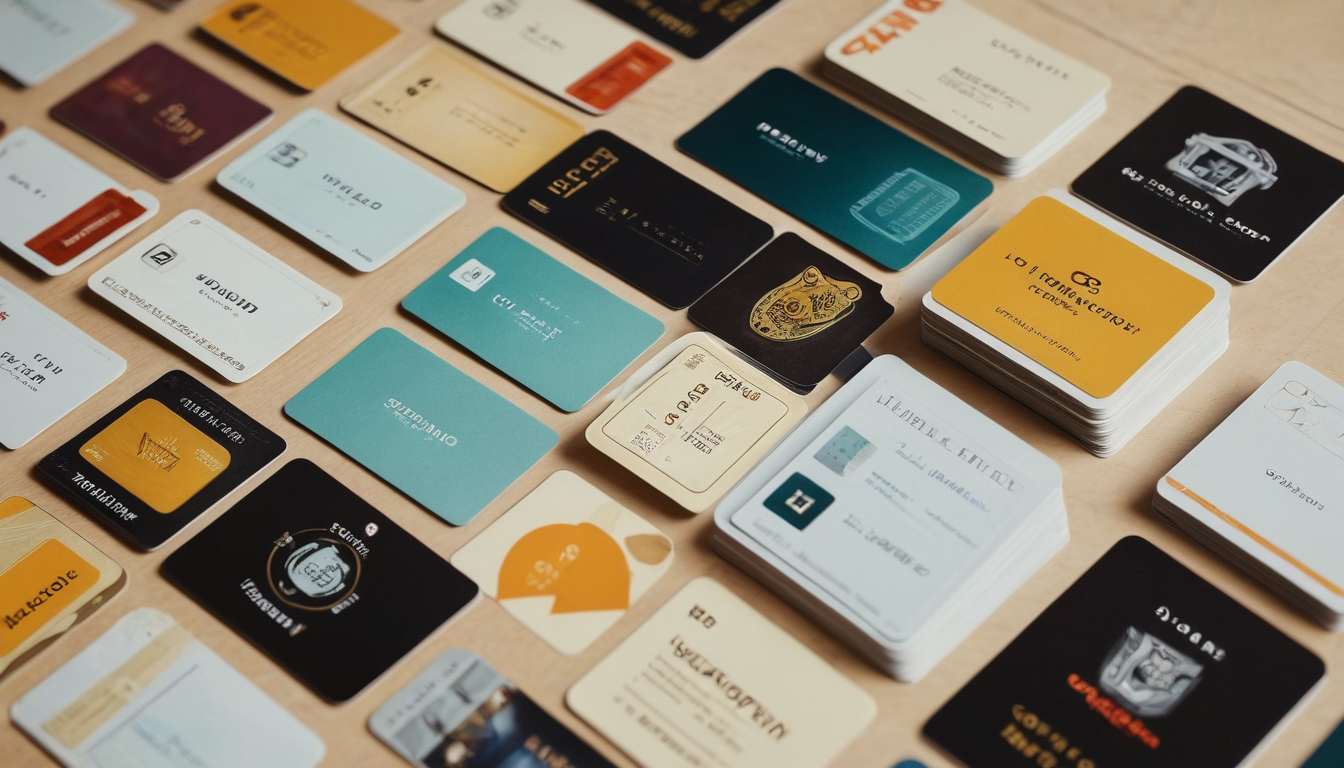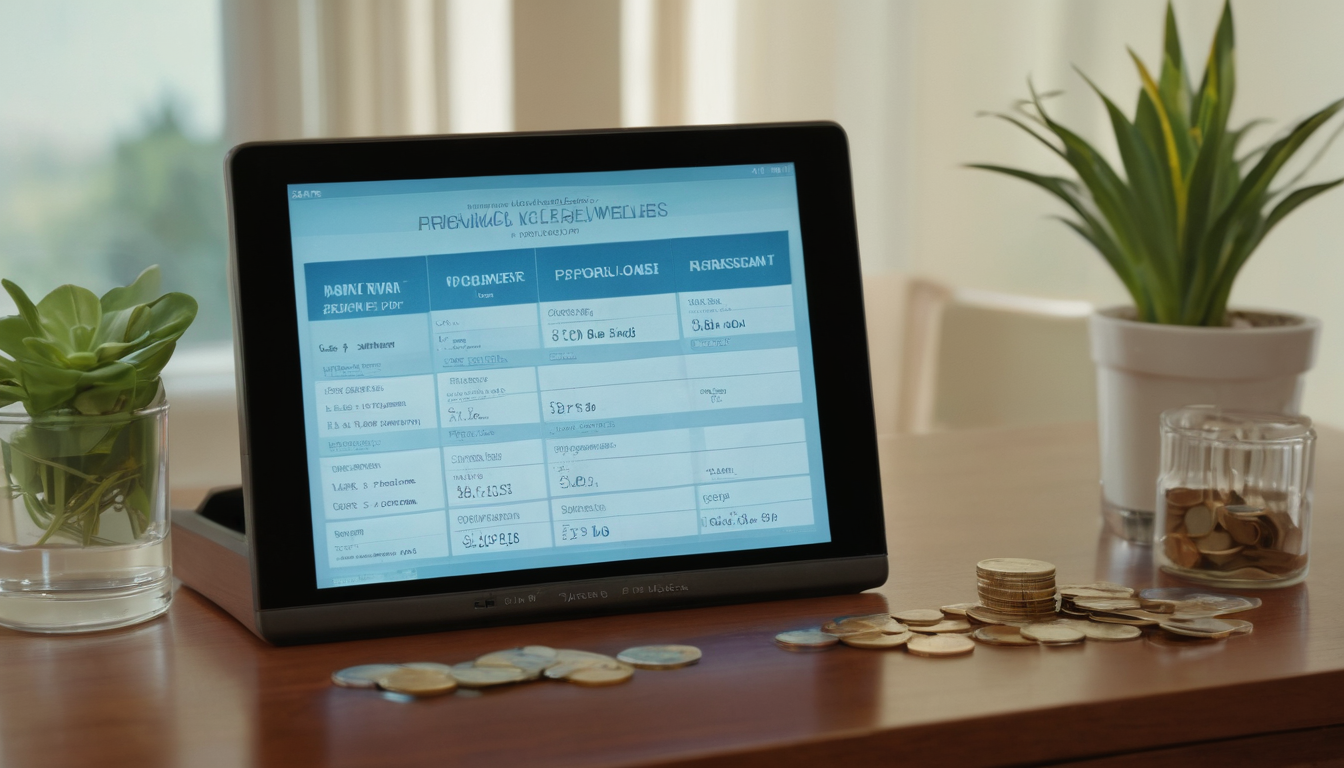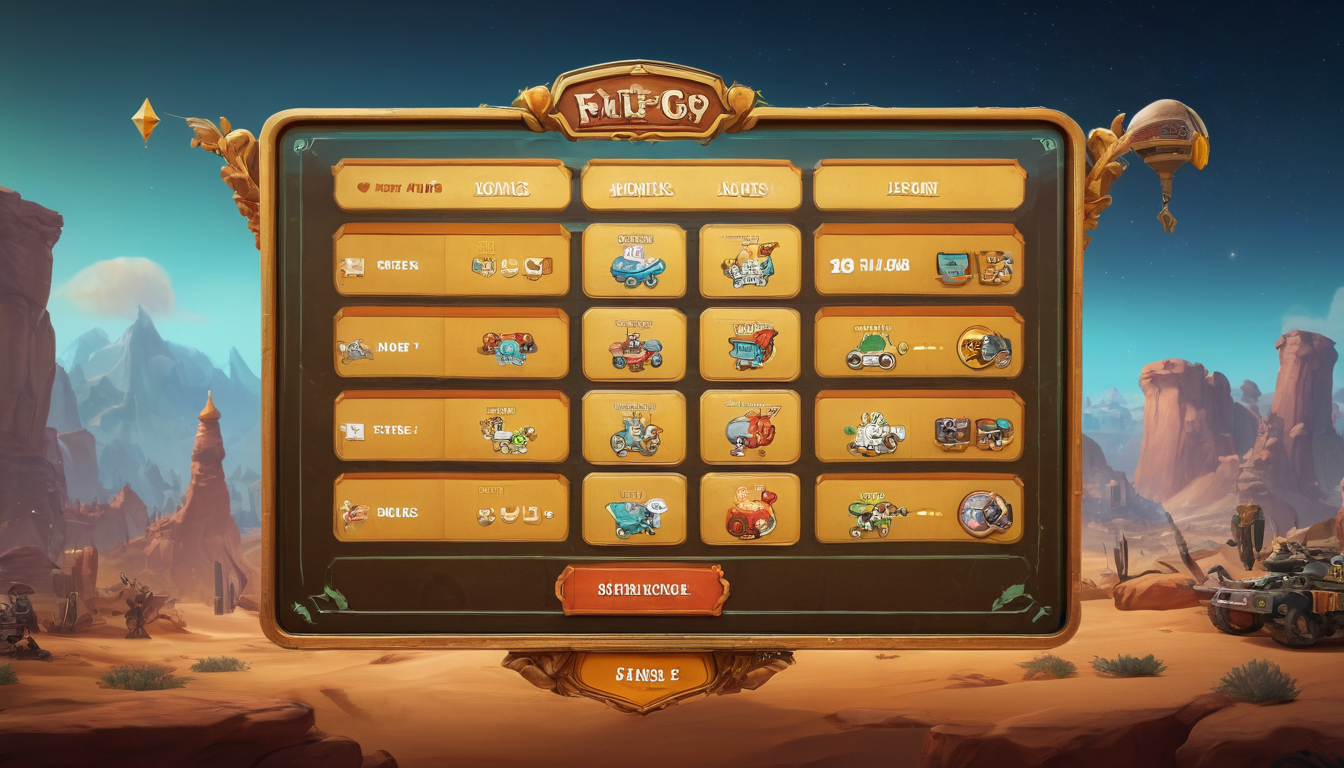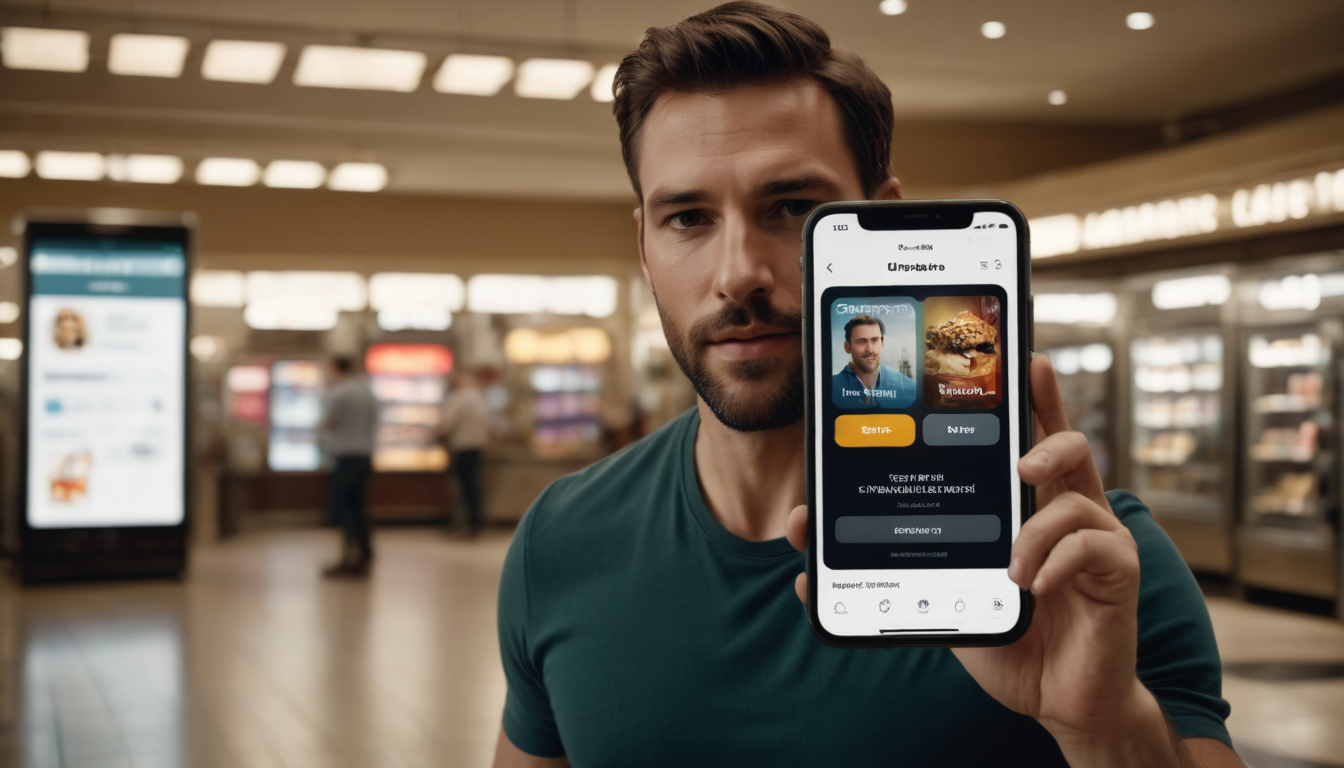Different Types of Loyalty Programs You Can Launch In Your Business: Unlocking Customer Retention and Rewards
As a business owner, you're always looking for ways to encourage customers to keep coming back. Loyalty programs are a powerful marketing strategy for this, offering different rewards that make customers feel special and valued. From earning points with your brand that can be exchanged for goods or services to enjoying experiential benefits, these programs reward customers with points and deepen their connection to your business. For example, the Sephora Beauty Insider program is a masterclass in providing access to exclusive events and products, turning occasional shoppers into brand advocates.
Key Takeaways:
- Diverse Loyalty Program Models: There are various loyalty program models like tiered programs, points-based systems, premium loyalty programs, and cash-back reward structures, each with its unique benefits and challenges.
- Customization and Alignment: It's crucial to align your loyalty program with your brand's values, industry standards, and customer demographics to ensure its effectiveness in driving customer engagement and loyalty.
- Innovative Strategies for Success: Innovations such as gamification, strategic partnerships, and value-based initiatives can enhance customer satisfaction, retention, and revenue generation through personalized experiences and continuous engagement.
- Continuous Evolution: Loyalty programs are continuously evolving with trends like AI integration, eco-conscious rewards, and personalized experiences, highlighting the importance of staying adaptable and ahead of the curve to meet changing customer expectations and preferences.
Another innovative model is the fee-based loyalty program, where customers pay a monthly or annual fee in exchange for premium benefits. This type of program, like Amazon Prime, has proven to be highly effective in building customer loyalty and achieving a competitive advantage. By carefully crafting a loyalty program that aligns with your brand’s values and goals, you can significantly grow your business and extend the customer lifetime value. Remember, the key is to use customer profiles for targeted offers that resonate well with your audience.
Exploring the Landscape of Loyalty Programs

Loyalty programs are not one-size-fits-all. From premium loyalty to points-based systems, each has its own barrier to entry and appeals to valuable customers differently. Loyalty programs require members to engage in a variety of ways, from simple sign-ups to achieving certain spending thresholds. Executed properly, these programs transform lower-tier customers into engaged customers, creating a new revenue stream for your business. Attractive rewards set apart high-value customers, ensuring they feel recognized and valued, which in turn fosters a stronger loyalty to your brand.
Understanding the Mechanisms Behind Loyalty Programs
At the core of successful loyalty programs is a deep understanding of what drives customer engagement. Premium loyalty programs, for example, offer exclusive benefits that go beyond traditional reward structures, creating a compelling reason for customers to join and stay engaged. These programs capitalize on the desire for immediate gratification and exclusive access, making them highly attractive to high-value customers. However, for these programs to truly succeed, they must be designed with the customer in mind, ensuring the rewards are both desirable and attainable.
Aligning Loyalty Programs With Brand Goals and Industry
When considering a loyalty program for your business, it's crucial to ensure it aligns with your brand’s mission and the industry you're in. Premium loyalty programs, for example, are not just about offering rewards; they're about creating a sense of belonging and exclusivity to the program. This means considering what your customers value most and how you can deliver that in a way that also meets your business objectives. Whether it’s through rewards, experiences, or recognition, your loyalty program should reflect what your brand stands for.
The Impact of Demographics on Loyalty Program Success
The success of a loyalty program can also depend heavily on the demographics of your customer base. For instance, younger audiences may be more attracted to hybrid loyalty programs that offer a mix of digital and real-world benefits, aligning with their online shopping habits and preference for instant gratification. Recognizing these demographic preferences and tailoring your loyalty program accordingly can significantly increase its effectiveness and appeal, making it a powerful tool for customer retention and satisfaction.
An In-Depth Look at Various Loyalty Program Models

Delving deeper into loyalty programs reveals a spectrum of models designed to cater to different business needs and customer preferences. Premium loyalty programs stand out for offering exclusive perks that go beyond conventional reward systems, aiming to create a more personalized and engaging customer experience. Understanding these models' nuances is key to selecting the right approach for your business, one that not only rewards customers but also fosters a deeper connection with your brand.
1. Tiered Loyalty Programs
Tiered loyalty programs introduce a hierarchy of rewards, offering different levels of benefits to encourage higher spending and engagement. This structure adds exclusivity to the program and plays a crucial role in making customers feel valued. By allowing members to see their status relative to others and offering enhanced benefits at higher tiers, these programs effectively motivate customers to aspire to higher levels of loyalty. The result is a more engaged customer base that perceives real value in maintaining their relationship with your brand.
Best Practices for Implementing Tiered Programs
A successful tiered program starts with understanding your customers and what motivates them. Encouraging customers to become brand advocates through exclusive rewards and recognition at higher tiers can significantly enhance the effectiveness of your loyalty program. It's also important to communicate clearly the benefits at each level and how customers can achieve them, ensuring the program is accessible and appealing to a broad audience. Customer feedback should guide continuous improvement, ensuring the program remains relevant and valuable to your audience.
Pros and Cons: Is Tiered Right for Your Brand?
While tiered programs can be incredibly effective, they're not suitable for every business. One key advantage is the capacity to collect rich customer data, which can inform product development and marketing strategies. However, these programs require careful management to ensure they don't alienate lower-tier customers who might feel excluded from the best rewards. Balancing inclusivity with exclusivity is crucial to avoiding customer dissatisfaction while still offering meaningful incentives for increased loyalty and spend.
Industry Spotlight: The North Face's Approach to Tiered Rewards
The North Face's XPLR Pass is an exemplary model of a tiered loyalty program done right. By offering a range of benefits that increase with customer engagement and spending, The North Face has created a program that not only rewards loyal customers but also encourages new customers to join and climb the tiers. From early access to sales and products to exclusive events, the program is designed to deepen the customer's relationship with the brand, showcasing the power of well-executed tiered loyalty programs.
With the Lealtad App, you can quickly and easily create a tiered rewards program. You can create a tiered rewards program from scratch by starting a new Reward Campaign, setting up the levels and rewards that your customers can reach, and then share with your customers. That's it!
2. Points-Based Systems
Points-based systems are among the most common types of loyalty programs, offering straightforward rewards that customers can easily understand and engage with. These programs reward customers with points for purchases, which can then be redeemed for a variety of rewards, making it a versatile and appealing option for many businesses.
Points Program Fundamentals and Best Practices
The success of a points-based system hinges on its simplicity and clarity. For every dollar spent, customers earn points – say, 10 points for every $1 spent. This transparent approach encourages more frequent purchases as customers aim to accumulate points for rewards. Best practices include setting clear thresholds for rewards, offering a range of redemption options, and ensuring the points system is easy for customers to understand and use.
Balancing Points Value and Customer Engagement
Maintaining customer engagement in a points-based loyalty program requires a balance between the perceived value of points and the ease of earning them. For example, if members earn 1 point for every $1 spent, and 100 points can be redeemed for discounts, the program must ensure that the effort to accumulate points feels rewarding. Incorporating elements of premium loyalty, such as special access or discounts for high-point balances, can enhance the attractiveness of the program and encourage ongoing customer acquisition and retention.
Example Highlight: SoFi's Innovative Points System
SoFi's loyalty rewards program is a standout example of a points-based system that goes beyond traditional rewards. By integrating financial wellness and achievements into its points system, SoFi has created a loyalty program that rewards customers not just for spending, but for engaging in positive financial behaviors. This innovative approach not only incentivizes customer loyalty but also aligns with the brand's mission to help customers achieve financial independence, showcasing the versatility and potential impact of well-designed rewards programs.
3. Premium Loyalty Programs

Premium loyalty programs represent a shift towards offering exclusive benefits for a membership fee. These programs focus on providing immediate, high-value rewards that create a compelling reason for customers to pay a premium. By offering unmatched convenience, exclusivity, and value, premium loyalty programs can dramatically enhance customer satisfaction and loyalty, setting your brand apart in a competitive market.
Understanding the Appeal of Fee-Based Loyalty
Fee-based loyalty programs, like premium memberships, offer exclusive benefits for a cost, attracting customers willing to pay upfront for perks. This model works well because it creates a sense of exclusivity and value, making members feel like part of a special club. For businesses, it means a steady revenue stream and highly engaged customers. When you offer something extra, such as free shipping, special discounts, or exclusive access, customers are more likely to join and stay loyal.
Challenges and Solutions in Premium Loyalty Implementation
Introducing a premium loyalty program comes with its challenges, like convincing customers to pay a fee upfront. However, the key is to highlight the value they'll get in return, which must exceed the cost. Offering a free trial period or a money-back guarantee can also lower the barrier to entry, making it easier for customers to decide to join. Remember, clear communication about the benefits and exclusive perks can turn skeptics into believers.
Case Study: The Success of Amazon Prime
Amazon Prime is a prime example of premium loyalty done right. With benefits like free two-day shipping, access to streaming services, and exclusive deals, the value offered far exceeds the annual fee. This not only keeps members renewing year after year but also encourages them to spend more on Amazon. The key takeaway? Offer unmatched value that makes the fee seem insignificant, and you'll have a loyalty program that drives revenue and customer satisfaction.
4. Cash-Back Reward Structures
Cash-back rewards motivate customers by giving them a percentage of their purchases back as cash. This simple yet effective approach appeals to customers because it’s straightforward and offers tangible value. By integrating cash-back rewards into your loyalty program, you can encourage repeat business and attract a wide audience looking for savings on their purchases.
Maximizing Customer Satisfaction with Cash-Back Offers
To truly delight your customers, offer cash-back rewards on a variety of products or services. This flexibility ensures that there's something for everyone, making your program more appealing. Also, timely payouts and clear communication about how and when customers will receive their cash back can boost satisfaction. Remember, the easier and more beneficial your program is, the more likely customers are to engage with it.
Examples of Effective Cash-Back Programs: Acorns
Acorns is a standout for its innovative approach to cash-back rewards. By investing the cash back directly into the customer's investment account, Acorns not only returns money but also encourages saving and investing. This unique angle adds value beyond the immediate cash back, aligning with customers' long-term financial goals. It's a powerful example of how adapting the cash-back model to fit your audience can lead to increased engagement and loyalty.
Cash-Back rewards campaigns are super easy to use with Lealtad. Simply select a Cashback campaign, set up your levels and rewards, and then share with your customers so that they can start earning cashback with their purchases!
5. Punch Card Programs

Punch card loyalty programs are a classic way to drive repeat business and enhance customer engagement. By offering a free product or service after a certain number of purchases, you give customers a tangible reason to keep coming back. Whether you choose digital punch cards or stick with traditional physical cards, the goal is to make customers feel rewarded and valued, turning occasional visitors into loyal customers.
Digital vs. Physical Punch Cards: Pros and Cons
Digital punch cards offer the convenience of tracking rewards right on a customer's smartphone, reducing the chance of losing a card and making it easier to push notifications and updates. However, physical punch cards can still appeal to less tech-savvy customers or businesses aiming for a simple approach. The choice depends on your customer base and operational capabilities, with digital options offering more data insights for personalized marketing strategies.
Client Case: How Starbucks Reinvented the Punch Card Experience
Starbucks transformed the punch card concept with its digital rewards program, making it easier for customers to earn rewards through a mobile app. This approach not only streamlined the process of collecting points but also allowed Starbucks to gather valuable customer data for personalized offers. By making the experience seamless and rewarding, Starbucks elevated customer satisfaction and loyalty, showing the potential of digital transformation in loyalty programs.
Punch card reward programs are great because of the simplicity and how familiar customers are with them. Starting a punch card program is incredibly easy when using Lealtad. Create a Stamp reward card, enter in the details about how many stamps someone needs to collect and reward information, and get your customers signed up so that they can start earning rewards as they purchase!
6. Value-Based Loyalty Initiatives
Value-based loyalty initiatives align a brand's values with customer rewards, creating a deeper connection with the audience. By supporting causes or initiatives important to your customers, you can foster loyalty that goes beyond transactions. This approach resonates with customers who prefer to support businesses that contribute positively to society, making them more likely to remain loyal and advocate for your brand.
Aligning Brand Values with Customer Rewards
To make your loyalty program more meaningful, integrate your brand's values into the rewards and experiences you offer. Whether it's sustainability, community support, or ethical practices, showing customers that their purchases contribute to a greater cause can deepen their loyalty. This not only enhances customer satisfaction but also strengthens your brand's reputation, making your loyalty program a powerful tool for both retention and attraction.
Value-Based Success Story: The Body Shop's Commitment Program
The Body Shop's loyalty program is a prime example of value-based loyalty done right. By rewarding customers not just for their purchases but also for participating in sustainability initiatives, The Body Shop aligns its rewards with its commitment to environmental and social causes. This approach has not only fostered a strong community of loyal customers but also reinforced the brand's values, proving that loyalty programs can be a force for good.
7. Gamification in Loyalty Strategies

Integrating gamification into your loyalty programs can turn ordinary transactions into engaging experiences. By incorporating elements like points, levels, and challenges, you can make earning rewards fun and exciting. This not only boosts customer engagement but also encourages repeat purchases and participation, making your loyalty program more effective and enjoyable for your customers.
Creating Engaging and Interactive Loyalty Experiences
To keep your customers coming back, add elements of fun and competition to your loyalty program. Challenges, leaderboards, and rewards for achievements can create a sense of excitement and anticipation. When customers enjoy participating in your program, they're more likely to stay engaged, increase their spending, and even spread the word to friends and family, amplifying the impact of your loyalty strategy.
Gamified Loyalty Done Right: The Grab Case
Grab, the Southeast Asian ride-hailing app, successfully incorporated gamification into its loyalty program by rewarding users with points for each ride they take. These points can be used for discounts on future rides or redeemed for rewards from partner businesses. By making each interaction with the app potentially rewarding, Grab has not only increased customer loyalty but also encouraged more frequent use of its service, demonstrating the power of gamification in driving business results.
8. Strategic Loyalty Partnerships
When you team up with other brands, you create a win-win situation. These partnerships can offer your customers exclusive promotions that they can't find anywhere else. It's a smart way to give your loyalty program a boost without having to do all the heavy lifting yourself. Think of it as joining forces to create an even bigger and better experience for your customers.
Leveraging Partnerships for Enhanced Loyalty Benefits
By leveraging partnerships, your loyalty program can suddenly offer more than just your products or services. It can include exclusive deals and experiences from allied brands. This not only makes your program more attractive but also helps in retaining customers. They see the value in staying loyal, not just for what they get from you, but from your partners as well.
Exploring the Synergy Between Brands in Loyalty Partnerships
When two brands come together, the synergy can lead to something special. Your loyalty program can tap into a new audience, while your partner's customers get to enjoy your offerings. It's about finding the right fit—a partner whose products or services complement yours. This mutual benefit is the key to a successful partnership.
Specialized Loyalty Rewards Program Formats

Aside from the usual loyalty programs, there are unique formats designed to meet specific needs. Whether it's subscription-based models or pay-to-join programs, these specialized formats can offer a fresh perspective on customer loyalty. It's all about finding the right approach that aligns with your brand and your customers' expectations.
Subscription-Based Models
Subscription-based loyalty programs are a great way to keep your customers coming back. By opting for a monthly or yearly subscription, customers get access to exclusive benefits. This model is especially effective for brands looking to offer ongoing value, like access to special content or prime user deals, and retain customers over time.
Evaluating the Shift Towards Subscription Loyalty
More businesses are moving towards subscription loyalty programs to ensure a steady relationship with their customers. This model offers predictable revenue and helps in maintaining a constant connection. It's about providing ongoing value that keeps customers engaged and committed to your brand.
Subscription Service Example: HelloFresh's Reward Ecosystem
HelloFresh has masterfully used a subscription-based loyalty program to keep their customers hooked. Subscribers receive tailored meal plans and exclusive recipes, making every box an anticipated event. It's a prime example of how offering continuous value can enhance customer loyalty and retention.
Hybrid Loyalty Systems
Hybrid loyalty systems combine different elements to create a comprehensive program. This approach allows you to cater to a wider range of customer preferences and behaviors. It's a flexible strategy that can adapt to various customer needs, making your loyalty program more inclusive and effective.
Combining Elements for a Comprehensive Loyalty Approach
By integrating points, tiers, and subscription elements, a hybrid loyalty system can offer something for everyone. This multi-faceted approach ensures that you can engage customers at different levels and through various incentives. It's a way to keep your program dynamic and appealing to a broad audience.
Hybrid Program Insight: CVS's Integrated Loyalty Strategy
CVS has developed an integrated loyalty strategy that combines discounts, rewards, and health services. This hybrid system caters to the diverse needs of their customers, making it more than just a place to shop but a hub for wellness and savings. It showcases the power of a well-rounded loyalty program.
Pay-to-Join Rewards Programs
Pay-to-join rewards programs ask customers to pay a fee for VIP benefits. This upfront investment can lead to higher customer engagement and loyalty. It's a model that promises exclusivity and superior value, appealing to those who are willing to pay more for a premium experience.
Assessing the Value Proposition of Membership Fees
When you charge a membership fee, it's crucial to ensure that the value outweighs the cost. Customers need to see clear benefits and exclusive perks that justify the expense. This model works best when the rewards are highly desirable and not easily found elsewhere.
Insights into Pay-to-Join Success: Examples and Strategies
Successful pay-to-join programs often offer a blend of convenience, exclusivity, and savings. By carefully curating the benefits and making sure they exceed the membership cost, these programs can foster a loyal and dedicated customer base. It's about creating a sense of belonging and privilege that keeps customers coming back.
Beyond Traditional Loyalty: Innovative Approaches

Moving beyond traditional loyalty programs, innovative approaches are reshaping customer engagement. From always-on rewards to gamification, these strategies are designed to captivate and retain today's dynamic customers. It's an exciting time to explore new ways to enhance loyalty and drive long-term success.
Always On Reward Programs
Always on reward programs ensure that customers are constantly engaged, offering incentives and rewards for ongoing interactions. This approach keeps your brand top-of-mind, encouraging continuous participation and loyalty. It's an effective way to maintain customer interest and commitment throughout their journey with your brand.
Ensuring Constant Engagement With Always On Strategies
Imagine a loyalty program that's awake even when you're asleep, constantly working to motivate customers. That's the power of Always On strategies. By providing ongoing rewards and interactions, these programs keep your customers engaged, no matter the time or place. This approach ensures that your brand stays top of mind, fostering a deeper connection and loyalty. It's like having a friend who's always there for you, making customers feel valued and appreciated at all times.
Real-World Application: HelloFresh's Continuous Reward Mechanism

HelloFresh takes the Always On strategy to heart with its continuous reward mechanism. By offering consistent, value-packed rewards, they motivate customers to keep coming back. Whether it's a discount on the next purchase or exclusive recipes for loyal subscribers, HelloFresh knows how to make each interaction count. This not only boosts customer satisfaction but also strengthens the bond between the brand and its customers, proving that a well-thought-out Always On strategy can turn occasional buyers into loyal fans.
Earn and Burn Programs: A Closer Look
Earn and Burn programs are all about giving and taking - you earn points through purchases or interactions and then burn these points to get rewards. It's a straightforward concept that's incredibly effective at keeping customers engaged and excited about your offerings. By creating a cycle of earning and redeeming, these programs encourage repeat business and deepen customer loyalty.
Understanding the Earn and Burn Concept
At its core, the Earn and Burn concept is simple. Think of Starbucks Rewards, a classic example of a points-based loyalty scheme where customers earn stars for their purchases. These stars then act as a currency that can be redeemed for free drinks or food. This system not only boosts customer satisfaction but also incentivizes repeat visits. The beauty of Earn and Burn programs lies in their ability to create a tangible sense of progress and reward, making every purchase feel like a step towards a coveted prize.
Best Practices and Challenges in Earn and Burn Programs
While Earn and Burn programs are highly effective, they do come with their challenges. Balancing the points' value so that customers feel rewarded without compromising your profit margins is key. Best practices include setting clear and attainable rewards, regularly communicating with participants about their points balance, and offering a variety of redemption options to cater to different preferences. Overcoming these challenges can transform your Earn and Burn program into a powerful tool for enhancing customer loyalty and driving sales.
Maximizing the Impact of Your Loyalty Program

To truly maximize the impact of your loyalty program, it's essential to tailor it to your brand and your customers. This means choosing the right model, whether it's tiered rewards, points-based systems, or something more unique like gamification. It also means leveraging data to understand what motivates your customers and how they prefer to engage with your brand. By aligning your loyalty program with your customers' values and preferences, you can create a powerful tool that drives engagement, loyalty, and revenue.
Incorporating AI and Technology for Personalized Experiences
In today's digital age, incorporating AI and technology into your loyalty programs can take customer satisfaction to new heights. By leveraging these tools, you can offer personalized rewards and experiences that truly resonate with your customers. Imagine a loyalty program that knows your favorite product and rewards you with discounts on it, or one that suggests new items based on your past purchases. This level of personalization not only enhances the customer experience but also strengthens the emotional connection between your brand and your customers.
Unifying Customer Experience Across All Program Types
Whether you're running a tiered loyalty program or exploring strategic loyalty partnerships, unifying the customer experience across all your loyalty initiatives is crucial. This consistency ensures that no matter how customers interact with your loyalty programs, they receive the same level of service and satisfaction. By integrating coalition programs or other loyalty elements seamlessly, you can create a cohesive loyalty ecosystem that enriches the customer journey and fosters long-term loyalty.
Driving Incremental Revenue Through Strategic Loyalty Design
At the heart of every successful loyalty program is strategic design aimed at driving incremental revenue. This means crafting your program in a way that encourages not just more purchases but also more meaningful interactions with your brand. Through careful planning and execution, your loyalty program can motivate customers to not only buy more but also advocate for your brand, turning loyal customers into brand ambassadors. The key is to continually reassess and fine-tune your strategy to ensure it aligns with both your business goals and your customers' evolving needs.
Choosing the Right Loyalty Program Model for Your Brand

Choosing the right loyalty program model is a crucial step in building a successful customer engagement strategy. It's not just about picking a trend; it's about understanding your brand, your industry, and most importantly, your customers. Whether you go for a points-based system, a tiered program, or a more innovative approach, the right model should align with your brand's goals and resonate with your customers. Remember, the ultimate aim is to build a program that fosters genuine loyalty, encouraging customers to keep coming back for more.
Future Trends in Loyalty Programs: Staying Ahead of the Curve
As customer expectations evolve, so do loyalty programs. Staying ahead of the curve means keeping an eye on future trends and being ready to adapt your strategy. From the integration of AI and machine learning for personalized experiences to the rise of eco-conscious rewards, understanding these trends can help you ensure that your loyalty program remains relevant and appealing. Embracing innovation and flexibility will be key to keeping your customers engaged and loyal in the ever-changing landscape of customer loyalty.
The Continuous Evolution of Customer Loyalty Programs
The world of customer loyalty programs is ever-evolving, driven by technological advancements and shifting consumer expectations. Today, brands like Sephora’s Beauty Insider Program and The Body Shop’s commitment program set the standard with their innovative approaches, allowing customers to earn points and redeem them in ways that truly add value. As loyalty programs continue to evolve, the focus remains on creating meaningful connections and rewarding customers in ways that reinforce brand loyalty. By staying adaptable and always putting the customer first, your loyalty program can thrive in this dynamic environment.
Conclusion: Crafting the Right Type Loyalty Program for Your Business
In navigating the vast landscape of loyalty programs, from value-based loyalty initiatives that align with your brand's ethos to transaction-based programs designed to convert casual customers into engaged members, the key is finding what uniquely appeals to your customers. Incorporating elements that encourage repeat purchases, such as explicit rewards through a traditional free program or building emotional connections with unique experiences or status rewards (like a custom-branded hat for your best customers), can significantly enhance customer satisfaction. It's about transforming customers to engage with your brand actively, which can ultimately lead to increased engagement and brand loyalty. For small business owners eager to dive into this rewarding journey, we invite you to visit Lealtad App today to your account and launch your first customer loyalty program within the next 10 minutes. It's your opportunity to boost revenue and make your customers happier by offering them the loyalty program benefits they truly appreciate!
